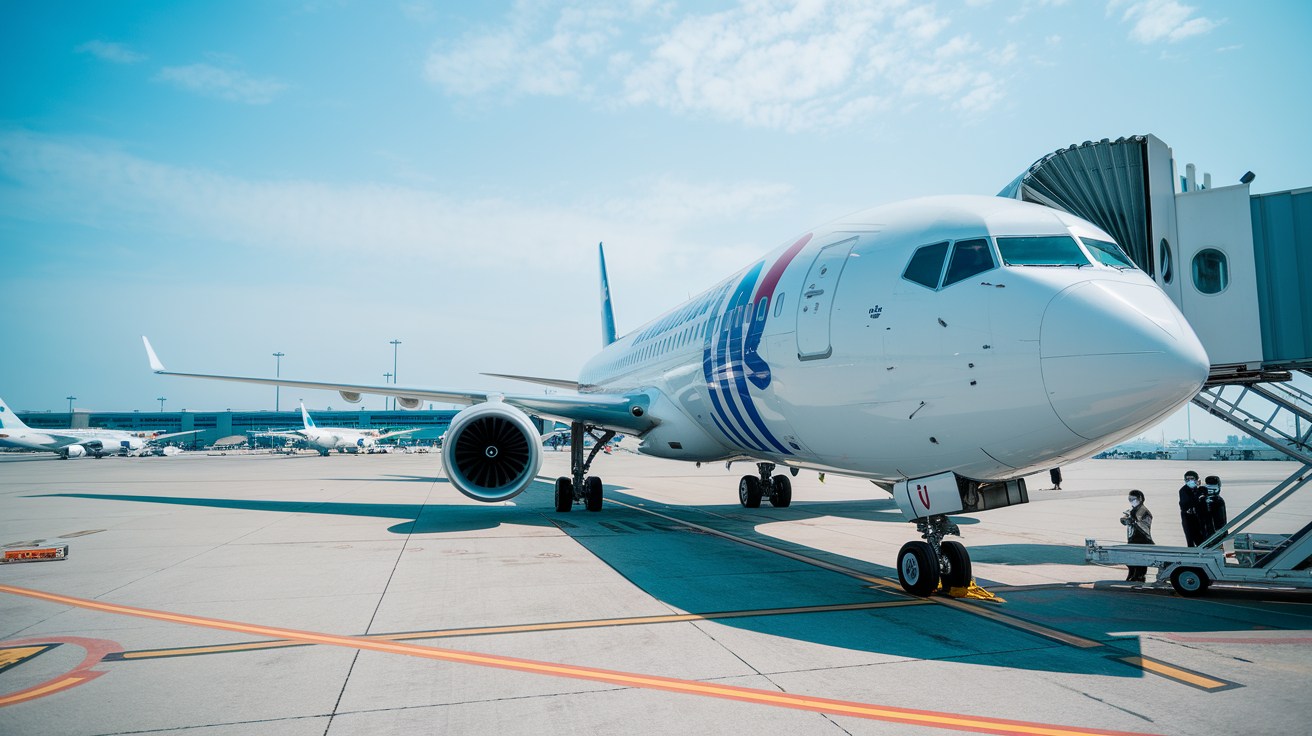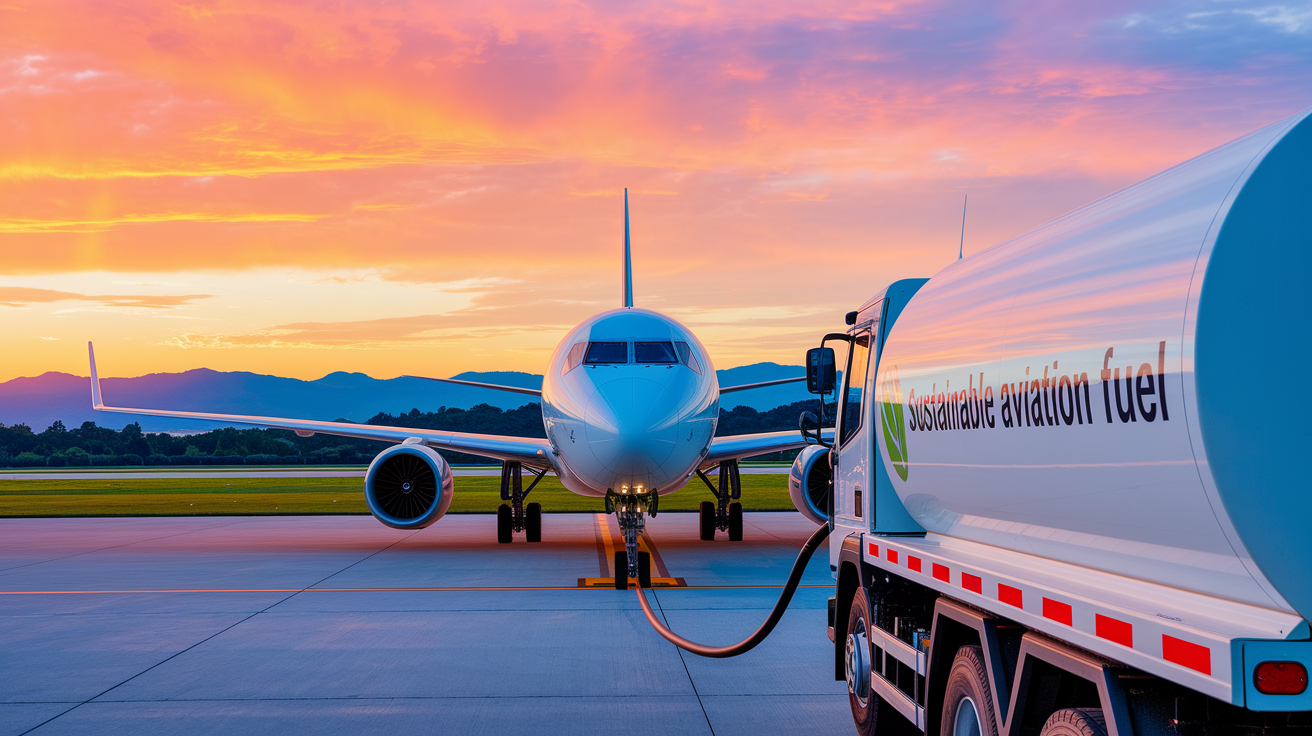
Future of Sustainable Aviation Fuel (SAF) in North America: Trends and Challenges
The aviation industry is undergoing a transformative shift towards sustainability, and Sustainable Aviation Fuel (SAF) is at the forefront of this revolution. In North America, where air travel demand is high and regulatory frameworks are evolving, the adoption of SAF is becoming a key strategy to reduce carbon emissions and drive a greener future. As government policies, technological advancements, and private sector investments align, North America is positioning itself as a global leader in the SAF market.
The Rise of Sustainable Aviation Fuel in North America
Sustainable Aviation Fuel is gaining momentum across North America due to its potential to significantly cut greenhouse gas emissions compared to conventional jet fuel. The region is witnessing an increase in SAF production capacity, with multiple refineries and biofuel plants investing in advanced technologies. Airlines are forming partnerships with fuel producers to secure long-term supply agreements, ensuring a steady transition toward sustainable aviation. Government incentives, such as the Inflation Reduction Act in the US and Canada’s Clean Fuel Regulations, are creating favorable conditions for SAF adoption. The industry still faces challenges related to feedstock availability and cost competitiveness.
Get More Info, Download Pdf Brochure: https://www.marketsandmarkets.com/pdfdownloadNew.asp?id=70301163

North America’s Global Leadership in SAF Development
North America is playing a crucial role in advancing the global SAF market. Leading fuel producers and refineries are ramping up production, while airlines like American Airlines, Delta, and Air Canada are committing to SAF usage. The region's proactive approach to sustainability policies, combined with research and development initiatives, is setting a benchmark for other markets worldwide. The involvement of aerospace giants like Boeing in SAF research adds credibility and accelerates innovation. As global aviation aims for net-zero emissions, North America’s SAF market is expected to be a driving force behind the transition.
Regulatory Landscape: Challenges and Opportunities
The SAF market in North America is heavily influenced by evolving regulatory frameworks. The US and Canada are implementing policies that incentivize SAF production and use, including tax credits, blending mandates, and carbon reduction targets. Programs such as the Low Carbon Fuel Standard (LCFS) in California and federal incentives under the Sustainable Skies Act are encouraging investment in SAF. Navigating complex regulatory landscapes remains a challenge for industry stakeholders. Harmonizing policies across states and provinces while maintaining cost-effective production is essential for market expansion.
Key SAF Production Facilities and Expanding Capacity
Several major SAF production facilities are operational or under development across North America. Companies like Neste, World Energy, and Gevo are investing in expanding their biofuel refineries to meet growing demand. New production plants are being established to enhance supply chain resilience and reduce reliance on imported feedstocks. The integration of existing petroleum refineries with SAF production capabilities is also accelerating market growth. Increased capacity will not only help lower costs but also make SAF a commercially viable alternative to traditional jet fuel.
The Economics of SAF: Cost vs. Sustainability
While SAF presents a sustainable alternative, its high production costs remain a major barrier to widespread adoption. Currently, SAF is two to five times more expensive than conventional jet fuel due to limited production scale and high feedstock prices. Airlines are concerned about the impact on ticket prices, as passing the cost onto consumers could affect demand. As production scales up and technological advancements improve efficiency, costs are expected to decline. Government subsidies, corporate sustainability commitments, and the development of cost-effective feedstocks will be key to making SAF economically competitive.

Feedstock Innovation: Expanding Raw Material Sources
The availability of sustainable feedstocks is crucial for the growth of the SAF market. North America has access to diverse raw materials, including used cooking oil, agricultural residues, municipal waste, and algae-based biofuels. Ensuring a sustainable and scalable feedstock supply remains a challenge. The industry is investing in alternative sources such as synthetic fuels produced through power-to-liquid technology and waste-to-fuel processes. Enhancing feedstock supply chains and promoting responsible sourcing practices will be critical for maintaining the sustainability of SAF production.
Airlines Driving the SAF Transition
North American airlines are at the forefront of SAF adoption, integrating sustainable fuel into their operations to reduce carbon footprints. Carriers like United Airlines, Southwest, and Alaska Airlines have entered long-term agreements with fuel suppliers to secure SAF for their fleets. These initiatives are driven by both environmental commitments and regulatory compliance. Airlines are also exploring innovative solutions, such as integrating SAF into their frequent flyer programs, allowing passengers to contribute to sustainable travel. The active participation of airlines in promoting SAF is essential for driving consumer awareness and acceptance.
Public-Private Partnerships Accelerating Growth
Collaboration between government agencies, private companies, and research institutions is playing a pivotal role in the SAF market. Public-private partnerships are funding large-scale projects, research on advanced biofuels, and infrastructure development. Organizations like the Federal Aviation Administration (FAA) and Transport Canada are working with industry leaders to set SAF standards and support pilot projects. Joint ventures between airlines, energy companies, and technology firms are helping bridge the gap between research and commercial viability, fostering a more robust SAF ecosystem.
Decarbonization Strategies: How SAF Fits into the Bigger Picture
Sustainable Aviation Fuel is a crucial component of the broader decarbonization strategy for the aviation industry. While electrification and hydrogen-powered aircraft are being explored, SAF offers an immediate solution to reduce emissions without requiring significant changes to existing aircraft and infrastructure. Compared to other decarbonization methods, SAF provides a more scalable option in the short to medium term. To achieve long-term sustainability, a combination of SAF, technological advancements, and operational efficiency improvements will be required.

Overcoming Challenges for a Sustainable Future
Despite its potential, the SAF market in North America faces several challenges, including production scalability, high costs, and policy alignment. Supply chain limitations and infrastructure constraints need to be addressed to ensure seamless SAF distribution. Investment in research and development is necessary to explore new technologies and improve conversion efficiencies. Policymakers and industry leaders must work together to establish a stable regulatory environment that supports innovation and long-term growth. Overcoming these obstacles will be critical in making SAF a mainstream fuel choice for aviation.
The Sustainable Aviation Fuel market in North America is on a promising trajectory, driven by regulatory support, technological advancements, and increasing industry commitments. As the region continues to lead the global transition toward sustainable aviation, strategic investments and policy frameworks will play a crucial role in shaping the future of SAF. While challenges remain, the collective efforts of stakeholders across the value chain indicate a strong commitment to decarbonizing air travel. With sustained momentum, SAF has the potential to transform the aviation industry and contribute significantly to achieving carbon neutrality goals.
80% of the Forbes Global 2000 B2B companies rely on MarketsandMarkets to identify growth opportunities in emerging technologies and use cases that will have a positive revenue impact.
- Leading Automated Guided Vehicle Companies 2024: An In-depth Analysis
- CHARGED UP: SHIFT TO E-MOBILITY AND THE EVOLUTION OF TRANSPORTATION
- Global Automotive Market: Predictions For 2024
- Revolutionizing Depot Charging: Hockey Stick Growth on the Cards
- The Future of Silicon Battery Industry: Innovations and Market Outlook


